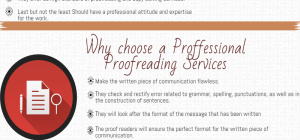
Are you paying too much for Google Adwords?
Many companies fail in their Google campaigns because Google Adwords does not come with a standard set of rules when it comes to implementing advertising strategies to generate ROI.
When you build a campaign, these tips will help you generate better conversions without burning your pockets to create a budget for advertising your business.
Use single theme based keyword in one ad group
One of the most common mistakes that businesses do is bid for a long list of keywords. This leads to lesser conversions and effectiveness of the ads. To maximize the conversion rates of the pay-per-click campaigns, one of the best strategies to implement is to lower the rate of advertising.
Filter keywords and reduce cost of bids
Adwords is all about keywords. This is the area that needs evaluation to its finest details so you know you are not spending too much on keywords that do not convert. You must also ensure to only use a limited list of keywords and be clear about the demographics and target audience that you are going to reach. It is good to evaluate and pause keywords that do not convert. This saves cost and you end up spending only on data that brings results.
Analyze hourly and weekly conversions
Analyze your business needs and create timelines to show ads. You don’t need to display your ads 24×7. Use the dimensions tabs in the Adwords campaign effectively and analyze how the ads are performing. This gives you an insight into how your ads are performing and which keywords and searches to drop. You will also know which are the ideal timelines to display your ads. You can always change the schedules of displaying ads based on metrics like impressions, cost-per-conversion, and conversion rate.
Optimize landing pages
Landing pages are essential and need to be cleaned of errors and bad content and make it concise and interactive as possible. Depending upon the nature of your business, choose the landing page carefully that gives users the answers they are looking for when they search for products and services relevant to your business. This is an essential step to take because if the users land on pages of your website that do not have information relevant to their searches, the budget of your ad campaigns will be wasted.
Add a list of negative keywords
Doing so makes your ad campaigns more effective. It tells the users what your business offers and what it does not. Exclude the keywords of the brands, categories, and services that you are not offering. Block keywords related to free stuff, law unless you are a law firm, pornography, and DIY and list generic keywords for these so you will not have “other searches” landing on your page. This is essential and keeps your traffic organic. You can create a filter in the “negative keywords” section of the ad campaign and block these keywords.
Exclude demographics that do not convert
Analyze your paid advertising platforms and check which locations your ad does not convert and exclude that location from the list. Target cities and countries where you know your ads will convert and delete locations from the campaign where they do not perform well. Always spend your ads budget if you are getting sales from a location instead of spending your more than 50% of your budget on locations that do not even make 20% of sales.
Check platforms that convert
It is a standard procedure to design a website that is compatible with mobile and PC platforms. If you find that your ads are not converting on the mobile platform, stop paying for ads on that platform. Analyze the user experience on the mobile platform before setting a budget for mobile ads.
Check the settings of your ad campaign
Settings such as ads rotation and keyword matching allow you to run multiple ads and ad groups effectively. These options allow you to add keywords with misspellings and plurals. You do not have to go by the book and be a grammar nazi when it comes to using keywords. These options give you the freedom to create a broad match to the list of keywords that you create.
Review your ads and make changes
Generate reports for ads performance and analyze the reports for landing pages, and the text used in the ads. One of the hacks to bring more conversions is to use keywords in ad texts as well as landing pages. Review the history of your ad campaigns and check the reasons why some ads have not been performing. The query reports that you generally give an insight of the terms that have converted.
Remarket your ads and tap into potential buyers
E-commerce companies can tap into the tool of remarketing and generate more leads to their business. Visitors who liked your products but have not yet made a decision can be persuaded to buy your products with the tools and techniques of remarketing. You can be consistent as well as aggressive with visitors and users who have shown interest in your products and bring conversions.
The conversion rate is one of the most important metrics of the ad campaign that you must pay special attention to. Evaluate the performance of your ads on various networks, social media platforms, search engines, and optimize the settings in your ads campaigns to reduce the cost-per-conversion and generate ROI.







